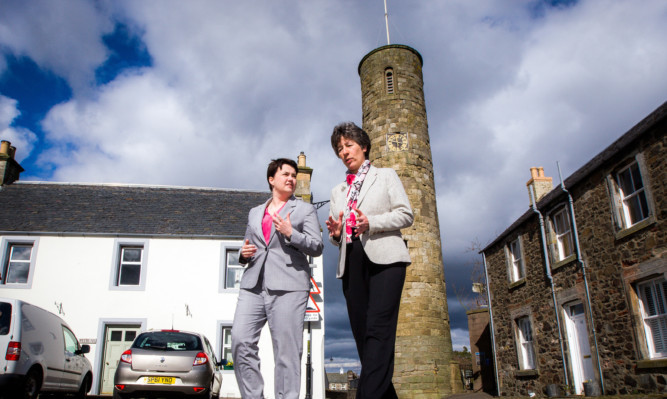The Scottish Conservatives have set out details of their plans to introduce a graduate contribution and bring back prescription charges.
Tory leader Ruth Davidson was quizzed on the policies during Tuesday’s televised leaders’ debate, stating she would introduce a graduate charge of about £6,000 for a four-year degree and “phase in” prescription charges up to “about £8”.
The SNP – which has pledged to maintain free university tuition and free universal NHS prescriptions – branded the policies a “hidden tax plan”.
The Tories said a “modest” £1,500 for each year of study would be payable by students starting the academic year 2017/18, in the April after they graduate, when they start earning £20,000 or more.
It would raise £100 million by the end of the next parliament, the party said.
Exemptions would include part-time, postgraduate, HND, HNC and teacher-training students, those assessed as an ‘independent’ student on the first day of the first academic year of their course and students eligible for the disabled students’ allowance.
The contribution could either be paid in full or through an income-contingent loan, the party said.
Prescription charges would be phased in, rising from £5 in 2017/18 to £8 in 2021/22 under Tory plans.
Exemptions for chronic conditions would be reviewed while children under 16, students aged 16, 17 or 18 in full time education, those over 60, pregnant women and young mothers, people with long-term conditions and those on low incomes would also be exempt.
People with a continuing physical disability, which prevents the patient leaving his/her residence except with the help of another person, would also be exempt.
Ms Davidson said: “We know that it costs more than £60 million a year for free prescriptions and, for me, I think that there are people out there who are working, who are earning a decent wage, who were always prepared in the past to pay towards their painkillers if it meant that somebody else got cancer drugs or if it meant there were enough nurses on wards.”
SNP campaign director and Deputy First Minister John Swinney said: “Last night, under pressure from Nicola Sturgeon, Ruth Davidson was forced to admit her hidden tax plan to charge students thousands of pounds to go to university – and to force people suffering from ill-health to pay unfair prescription charges.”
He added: “When tuition fees were introduced in England they were set at just £1,000 per year before rising to £9,000 before the Tory government removed the cap altogether last year – Ruth Davidson has made no guarantee that they won’t do the same in Scotland.”
Liberal Democrat leader Willie Rennie said: “This is a return to traditional Tory stealth taxes. In the 1990s, as John Major’s government collapsed in chaos, the Conservatives hit people with 22 stealth taxes.
“Now, Ruth Davidson wants to do the same in Scotland too. If Ruth wants people to pay more tax, the least she should do is be honest about it.”
